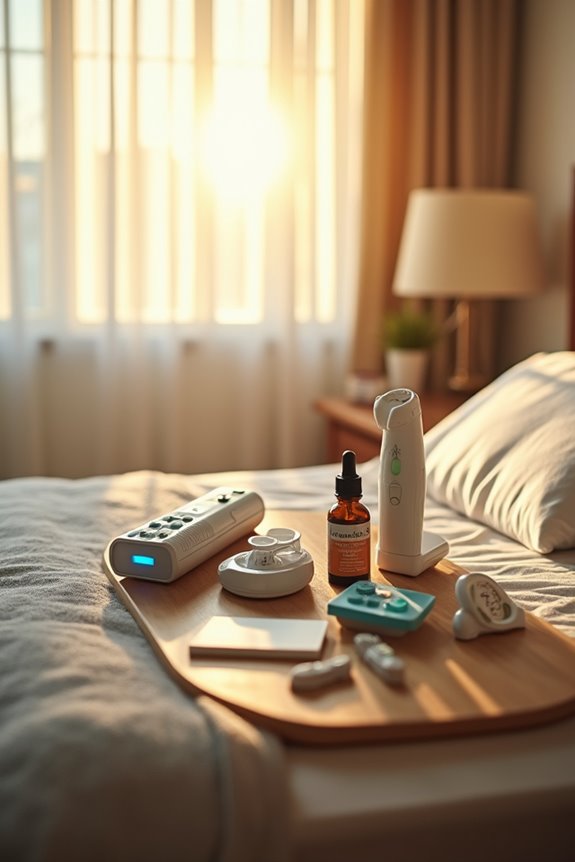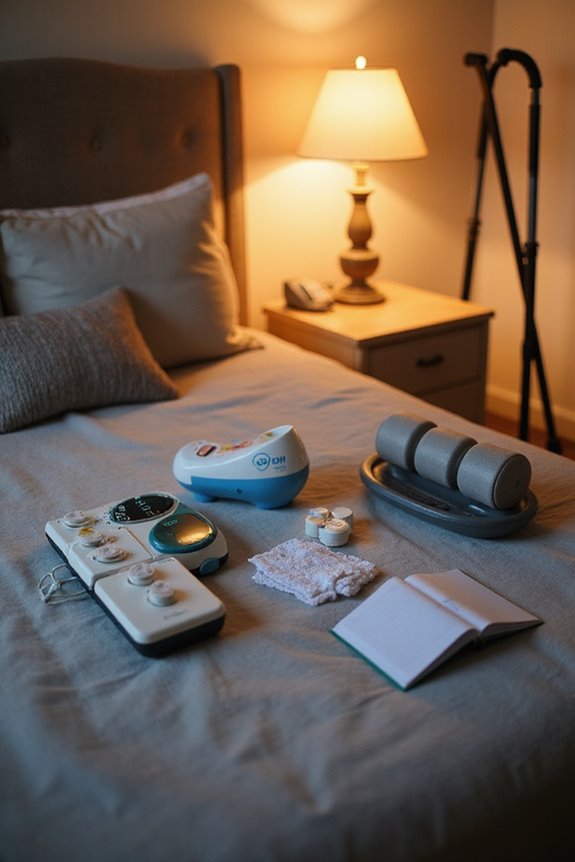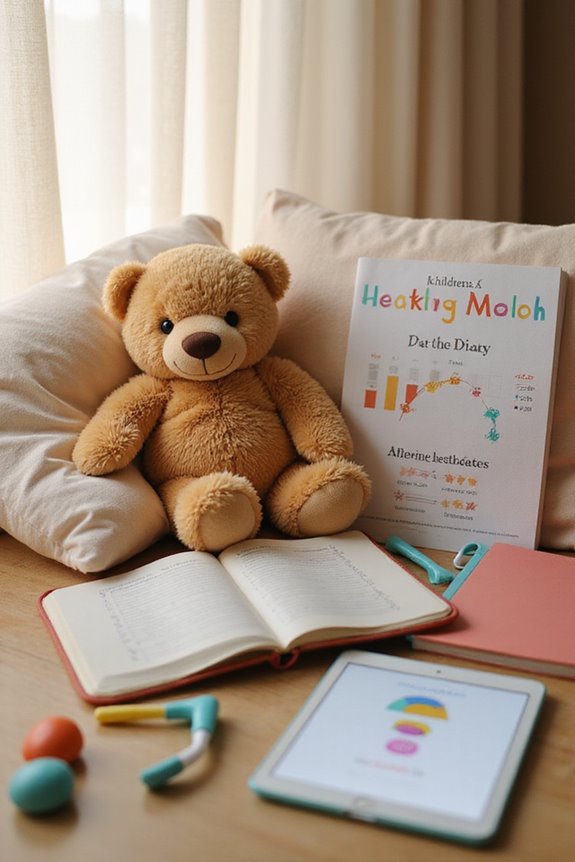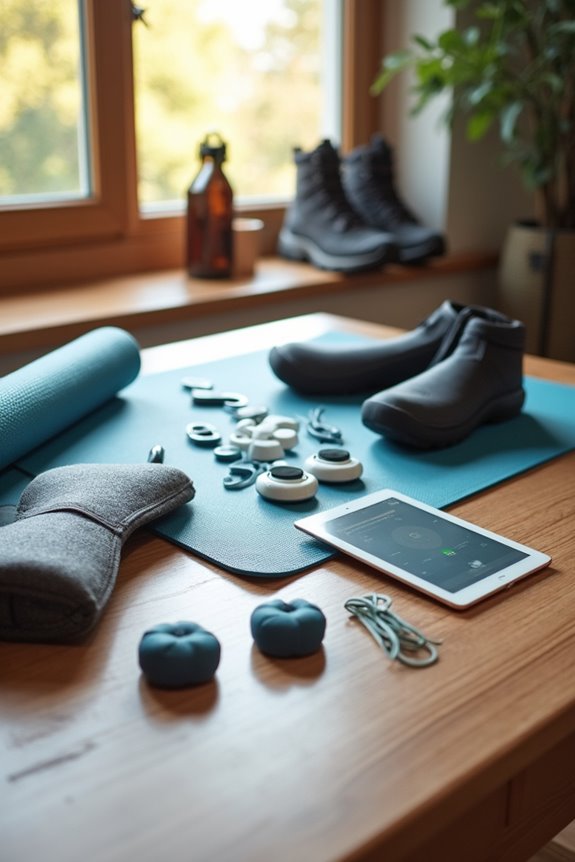Elderly patients can use multiple pain devices safely, but it requires careful management. Physiological changes, including reduced tissue regeneration and increased vulnerability to side effects, heighten risks. Polypharmacy, characterized by multiple medications, further complicates pain management. Proper assessment, appropriate fitting, and multidisciplinary approaches are essential to minimize complications such as falls and cognitive decline. Monitoring device interactions and individual patient responses is critical. Understanding these factors can enhance patient safety and effectiveness in pain management strategies. Further insights await.
Key Takeaways
- Careful assessment of each device’s interactions with medications is essential to prevent adverse effects in elderly patients.
- Proper fitting and training in using multiple devices can minimize fall risks and enhance safety.
- Regular monitoring of the patient’s functional status and comorbidities is crucial for safe device use.
- Multidisciplinary collaboration among healthcare providers ensures comprehensive evaluation and management of pain devices.
- Patient education on the safe use of multiple pain devices promotes adherence and reduces complications.
Understanding the Physiological Changes in Aging
Understanding the physiological changes that occur with aging is essential for comprehending the complexities of elderly patient care.
Cellular Aging and Tissue Regeneration****
- Aging cells enlarge but lose their ability to divide, impairing tissue regeneration.
- Lipofuscin accumulation indicates cellular “wear and tear,” affecting function.
- Decreased cell turnover and cachexia lead to skeletal muscle mass loss.
Connective Tissue and Organ Rigidity****
- Connective tissues stiffen, increasing rigidity in organs and blood vessels.
- Atrophy in multiple tissues can result in nodular formations.
Cardiovascular and Respiratory Changes
- Heart muscle thickening and arterial stiffness reduce cardiac responsiveness.
- Lung elasticity declines, decreasing oxygen absorption efficiency.
These factors collectively diminish organ reserve capacities, impacting overall health in older adults and necessitating careful management strategies.
Risks of Polypharmacy in Pain Management

Polypharmacy, defined as the concurrent use of five or more medications, poses significant risks in the management of pain among elderly patients.
- Prevalence: Approximately 89.5% of elderly patients receiving home care for chronic pain experience polypharmacy, often using nine or more medications daily.
- Adverse Effects: Polypharmacy risks include increased adverse drug reactions, drug-drug interactions, and complications such as falls, cognitive decline, and acute kidney injury.
- Medication Interactions: Older adults are particularly vulnerable to the side effects of multiple medications, which can exacerbate conditions and complicate pain management strategies.
- Outcomes: The complexity of polypharmacy can reduce adherence to essential pain medications, ultimately undermining effective pain control and increasing the risk of mortality.
Evaluating the Safety of Pain Devices for Elderly Patients

Evaluating the safety of pain devices for elderly patients is crucial, particularly in light of the complex interplay between pharmacological treatments and device usage.
- Device Interactions: Careful consideration is necessary to assess how pain medications, such as tramadol and acetaminophen, interact with assistive devices.
- Cognitive Impacts: Chronic pain can exacerbate cognitive impairment, leading to increased risks with device usage.
- Mobility Aids: Proper fitting and training in the use of canes, walkers, and other mobility devices are important to minimize fall risks.
- Assessment Requirements: Each patient’s functional status and comorbidities must be evaluated to guarantee safe device implementation.
Multidisciplinary approaches are essential to manage potential risks, ensuring that elderly patients can use pain devices safely and effectively. Additionally, understanding the customization features of pain devices can enhance their usability and effectiveness for elderly patients.
Targeted Approaches to Managing Different Pain Types

Targeted approaches to managing different pain types in elderly patients necessitate a thorough understanding of both pharmacologic and non-pharmacologic strategies.
Pharmacologic Strategies:
- Acetaminophen is often the first line for mild to moderate pain.
- Caution is advised with NSAIDs and opioids due to side effects and polypharmacy risks.
- Antidepressants like duloxetine and anti-seizure medications effectively address neuropathic pain.
Non-Pharmacologic Strategies:
- Cognitive behavioral therapy (CBT) and pain neuroscience education (PNE) help improve pain perception and reduce distress.
- Multimodal therapies, combining exercise and physical rehabilitation, enhance functional outcomes. Additionally, incorporating heating pads can provide effective pain relief and comfort for elderly patients managing chronic discomfort.
Importance of Multidisciplinary Assessment

A thorough approach to pain management in elderly patients emphasizes the importance of multidisciplinary assessment. This extensive evaluation incorporates medical, psychological, functional, and social factors that influence pain and treatment outcomes.
Key elements include:
- Multidisciplinary Collaboration: Integration of various healthcare professionals guarantees tailored pain management plans addressing age-related physiological changes and comorbidities.
- Biopsychosocial Model: This model considers biological, psychological, and social contributors to the pain experience, enhancing clinical decision-making.
- Challenges in Assessment: Cognitive impairments and communication barriers in older adults complicate pain evaluation, necessitating multidimensional approaches.
Ultimately, an effective multidisciplinary assessment leads to improved clinical outcomes, guaranteeing elderly patients receive ideal pain management while enhancing their quality of life.
Monitoring and Managing Potential Side Effects
Monitoring and managing potential side effects in elderly patients receiving pain management therapies is fundamental to ensuring safe and effective treatment outcomes.
Pharmacologic Monitoring Strategies:
- Nonsteroidal anti-inflammatory drugs (NSAIDs) can lead to nausea, ulcers, and kidney issues, particularly in higher doses.
- COX-2 inhibitors, while safer for the stomach, still pose risks including headaches and cardiovascular complications.
- Opioids require ECG monitoring due to potential cardiac arrhythmias.
Cognitive and Neurological Considerations:
- Skeletal muscle relaxants may increase delirium risk.
- Tramadol can heighten seizure risk and serotonin syndrome.
Cardiovascular and Renal Management:
- Regular renal assessments are essential due to nephrotoxic effects of certain medications.
- Monitoring fluid retention is critical to prevent exacerbations of heart failure. Additionally, using devices like TENS units can provide non-pharmacologic pain relief options that may reduce reliance on medications.
The Role of Non-Pharmacologic Treatments
Non-pharmacologic treatments play an essential role in managing pain among elderly patients, particularly as the population ages and the prevalence of chronic pain conditions rises. These holistic therapies encompass various methods, including:
- Exercise and physical therapy: Enhancing mobility and function.
- Heat and cold therapy: Providing localized pain relief.
- Mindfulness practices: Such as meditation and yoga, promoting stress reduction.
- Neurostimulation: Techniques like TENS for pain modulation.
- Massage and acupuncture: Recognized for their efficacy in alleviating discomfort.
Clinical evidence suggests these approaches can decrease pain intensity, improve overall function, and reduce reliance on pharmacologic treatments. Additionally, they typically present fewer adverse effects, making them particularly suitable for elderly patients with comorbidities, underscoring their significance in thorough pain management strategies. Incorporating tools like back massagers can further enhance relaxation and muscle recovery for elderly patients.
Strategies for Individualized Pain Management Plans
Strategies for individualized pain management plans are fundamental in addressing the unique needs of elderly patients, especially given their complex health profiles.
Comprehensive Pain Assessment
- Utilize validated pain scales like Numeric Rating Scale (NRS) to characterize pain accurately.
- Regular reassessment is essential for adjusting interventions based on patient response.
Individualized Interventions
- Engage patients in developing pain management plans, ensuring their preferences are documented.
- Setting realistic pain relief objectives enhances adherence.
Multidisciplinary Collaboration
- Foster teamwork among healthcare professionals to address multifactorial causes of pain.
- Communication across disciplines is critical for timely intervention adjustments.
Patient Engagement
- Educate patients and caregivers on pain management strategies, fostering informed participation.
- Advanced care planning respects patient autonomy, especially for those with cognitive decline. Additionally, incorporating advanced models of heating pads with customizable heat settings may enhance comfort and effectiveness in pain relief for elderly patients.
Frequently Asked Questions
Can Elderly Patients Use Multiple Pain Devices Simultaneously?
Approximately 60% of elderly patients experience chronic pain, highlighting safety considerations when using multiple pain devices simultaneously. Device interactions can complicate management, necessitating careful monitoring and a multidisciplinary approach to minimize risks and enhance overall well-being.
What Are the Signs of Device-Related Complications in Elderly Patients?
Elderly patients may exhibit signs of device complications, including redness, swelling, and localized pain. Additionally, symptoms like fever, fatigue, or neurological changes warrant careful monitoring to guarantee their safety and well-being in managing pain effectively.
How Often Should Pain Management Plans Be Reviewed for Elderly Patients?
Pain management plans for elderly patients should undergo frequent reviews, ideally multiple times daily initially, focusing on ongoing pain assessment and adjusting treatment frequency based on individual responses, ensuring maximum relief and minimizing adverse effects.
Are There Specific Devices Recommended for Chronic Pain in the Elderly?
Chronic comfort can come from carefully considered choices. Transcutaneous electrical stimulation and topical analgesics are often suggested for seniors, promoting pain relief while ensuring safety and satisfaction through tailored treatment strategies that respect individual needs and preferences.
What Educational Resources Are Available for Caregivers Managing Elderly Pain?
Numerous educational resources exist for caregivers managing elderly pain, including caregiver training programs, online courses, and downloadable materials. These tools enhance understanding of pain management, ensuring caregivers feel supported while providing effective, compassionate care to their loved ones.





